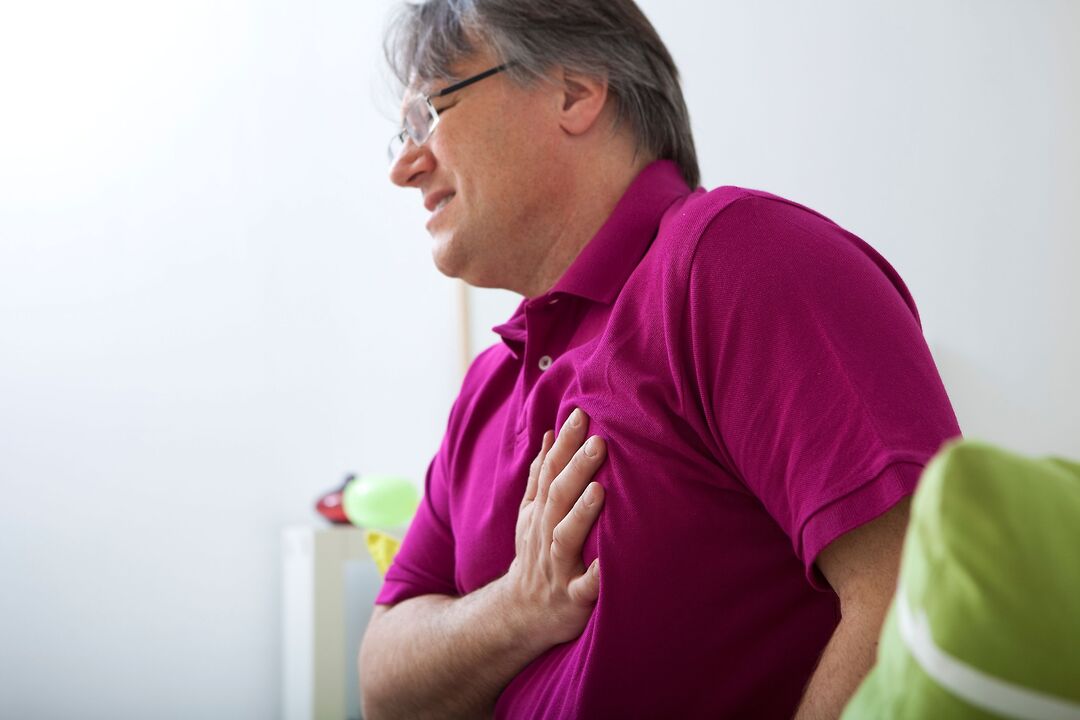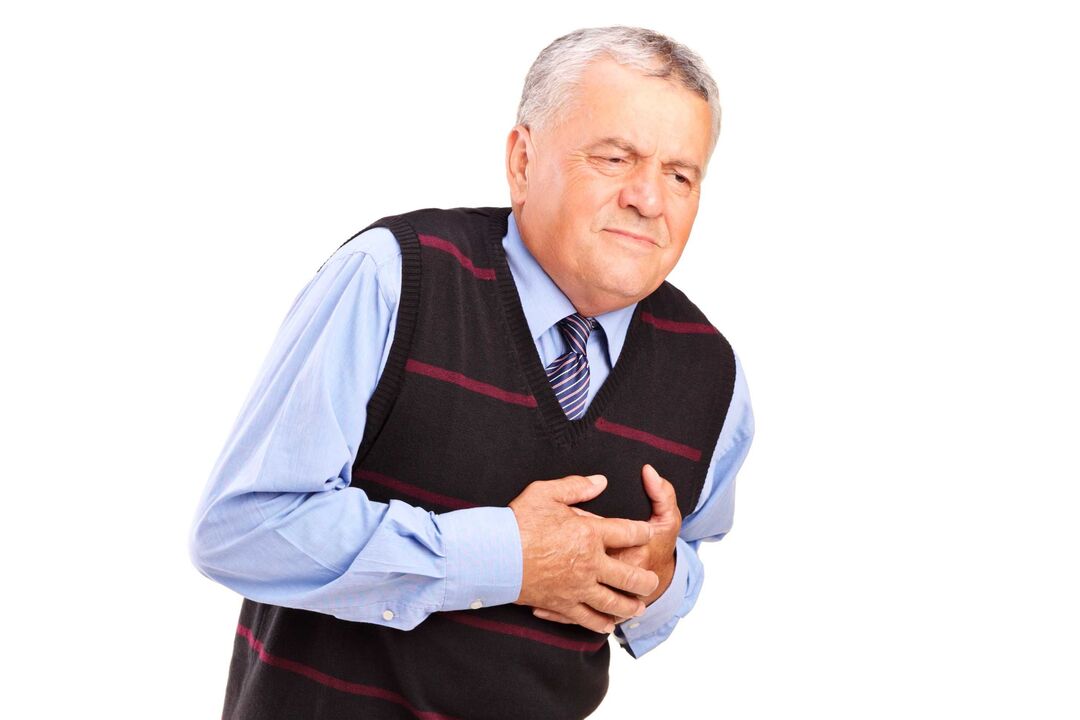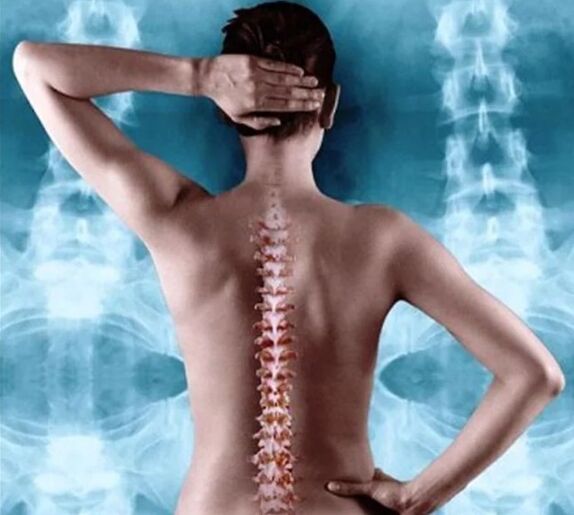
The human spine is one of the most important parts of the musculoskeletal system and a violation of its normal functioning always has negative consequences for the whole organism. Thoracic osteochondrosis refers to degenerative-inflammatory diseases of the intervertebral discs in the chest area. The disease most commonly affects people over the age of 55, but it can also affect any adult. The disease is registered half as often in men as in women.
Although the department is the largest and consists of 12 vertebrae in the middle of the spine, it is generally less prone to pathologies. This is due to the lower mobility and good protection of the muscle corset. This feature of the structure is a positive factor, but when diagnosing osteochondrosis of the chest region, it is difficult to identify and can be confused with other diseases for a long time, especially if there is a fever.
For the International Classification of Diseases 10th Revision (ICD-10), there are criteria according to which osteochondrosis belongs to the class of dorsopathy (M40-54). There is a separate class of ICD-10 for osteochondrosis of the spine - M42 according to ICD-10 and is equated with deforming dorsopathies. The diagnosis is made according to the ICD-10 code M42. 0 for youth and M42. 1 ICD-10 for osteochondrosis in adults. The M42. 9 ICD-10 code may occur in unspecified pathology.
The reasons
Thoracic osteochondrosis is less common than lesions of other parts of the spine. Many people do not seek medical help for a long time, thinking that they have other pathologies. According to statistics, this leads to the fact that the disease is most often detected in an advanced form.
The disease occurs due to impaired nutrition and blood supply to the intervertebral discs. The formation of osteochondrosis can lead to disruption of the normal structure of the vertebrae. The spine's elasticity and wear properties are lost, and all of this leads to the destruction of intervertebral discs, ligaments, and other structural components. As a result of such disorders, the nerve roots are pinched and unpleasant symptoms appear.
Finding out the exact causes of the pathology is almost impossible. There is a risk group among people and predisposing factors leading to the disease. In the people themselves, this age is more than 55 years old, the female gender and the presence of spinal diseases increase the risk of disease. Deviations such as scoliosis, kyphosis, over time, violate posture and the normal arrangement of the spine. As a result, metabolic processes in the spine are disturbed and chondrosis develops.

There are factors that directly depend on the person that lead to the pathology. Let's highlight the most important ones:
- overweight;
- Abuse of bad habits: alcohol, smoking, fatty foods;
- sedentary lifestyle.
People who spend a lot of time in a sedentary position are prone to the disease. This applies to office workers, seamstresses, operators, drivers. A person who has suffered a back or spinal injury should continue to exercise caution in the future. There is a group of people with hereditary or acquired diseases that are prone to musculoskeletal disorders. The main conditions are diabetes mellitus, muscle weakness, disruption of the normal functioning of the glands.
Types and clinical picture
Signs of osteochondrosis of the thoracic spine depend on the degree of pathology and neglect of the process. A total of four degrees of the disease are distinguished.
At the first degree, there is a violation of the elasticity of the intervertebral discs and a decrease in their height. Symptoms of pain are not so sharp and quickly pass at rest. Basically, the pain is felt in the middle of the back and in the chest. Often the disease goes into a passive state, and clinical manifestations appear only during the exacerbation, quickly stopped and treatable. Signs of intoxication are rarely present, sometimes the temperature may rise and weakness may appear. The temperature quickly normalizes when the acute phase is over.
The second degree is more dangerous and can cause severe neurological symptoms. With this degree, the height of the intervertebral discs constantly decreases, elasticity is broken. The fibrous ring of the intervertebral disc can be damaged and a tear forms. This stage is fraught with the risk of the occurrence of an intervertebral hernia.
Pain in the chest and back increases and eventually spreads to the adjacent area. Deep breathing or sudden movement causes an acute attack of pain. When nerve endings are damaged, symptoms spread down the ribs. During the period of exacerbation there is an increased temperature, general weakness. Associated with this degree of disease is numbness and creeping "goosebumps" at the site of the lesion. When nerve fibers are damaged, normal innervation in the upper or lower extremities is disturbed.
Osteochondrosis of the thoracic region of the third degree is characterized by the beginning of the formation of an intervertebral hernia. There is severe pain that occurs under certain circumstances. Often the pain can increase at night, when you are in one position in the cold for a long time. Pain in the chest, in the back, along the ribs. In the event of contact with the spinal cord, the following symptoms may occur:
- violation of the innervation of the legs and arms;
- increased pain at night;
- pain in the esophagus, right hypochondrium, stomach;
- increased body temperature;
- Problems with the normal functioning of the gastrointestinal tract.

In the last, fourth degree, the bone tissue of the spine is destroyed. There is a violation of the mobility of the vertebrae, the characteristics of depreciation are reduced. Thoracic osteochondrosis of this degree is dangerous due to damage to the spinal cord and impairment of human performance. With an exacerbation, body temperature rises, there is severe pain in the chest, in the middle of the back.
Under the general clinical picture, two main symptoms are distinguished - these are dorsago and dorsalgia. Dorsago is characterized by severe chest pain. A person, after staying in one position for a long time, feels like shooting in the chest. During an attack, breathing becomes difficult and the pain increases with lateral movements of the upper body. This condition increases the temperature.
With dorsalgia, there is a slight pain in the area of \u200b\u200bthe damaged vertebrae. Symptoms of pain increase and last up to three weeks. The pain increases after deep inhaling or exhaling and with movements. Symptoms worsen at night and are relieved by walking. The International Classification of Diseases, 10th Revision (ICD-10), assigns dorsalgia with chest pain a separate code M54. 6 to.
diagnosis and treatment
Thoracic osteochondrosis is not difficult to detect with the right approach. The main thing is to conduct a differential diagnosis with cardiovascular pathologies and exclude other diseases. The presence of specific pain, fever and neurological disorders increases the doctor's doubts.

The main diagnostic method is radiography. It is necessary to photograph not only the damaged department, but also to capture the adjacent ones in order to exclude complications. If a complete examination of the spine is not possible and there is a suspicion of tissue and vascular damage, computed tomography and magnetic resonance imaging are prescribed.
In most cases, thoracic osteochondrosis is treated with conservative methods.
The main thing in the treatment is the complexity and individual approach.
Depending on the degree of pathology, treatment at home or in the hospital is possible. In any case, certain principles must be applied - this is a gentle weight-bearing regime, limiting lifting weights and playing sports, preventing overwork and strictly observing the doctor's recommendations.
Thoracic osteochondrosis in the acute period of the disease, when pain and temperature appear, requires bed rest. NSAIDs, analgesics are prescribed if pain syndrome and temperature are present. Maybe a combination of ointments, physiotherapy and massage. This combination allows you to quickly overcome the disease and get back on your feet.
The basis of the treatment of osteochondrosis is a local effect. Manual therapy allows you to position the vertebrae, massage, physiotherapy (electrophoresis, ultrasound, magnetotherapy) and reflex therapy can restore nutrition. It is important for both men and women to engage in therapeutic exercises and adhere to the treatment regimen.
In case of complications, traction or even surgery may be prescribed. Otherwise, symptomatic therapy is used.

























